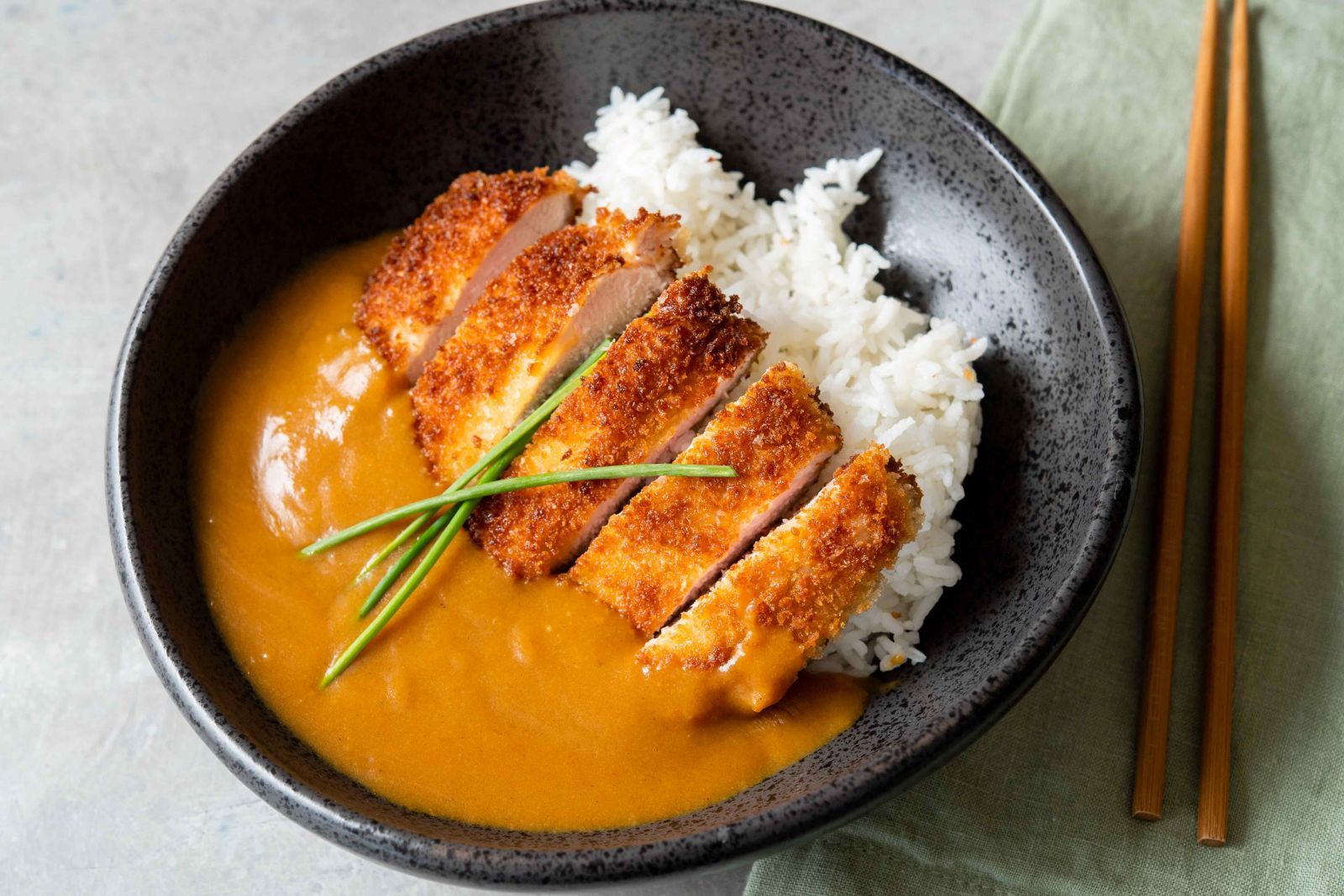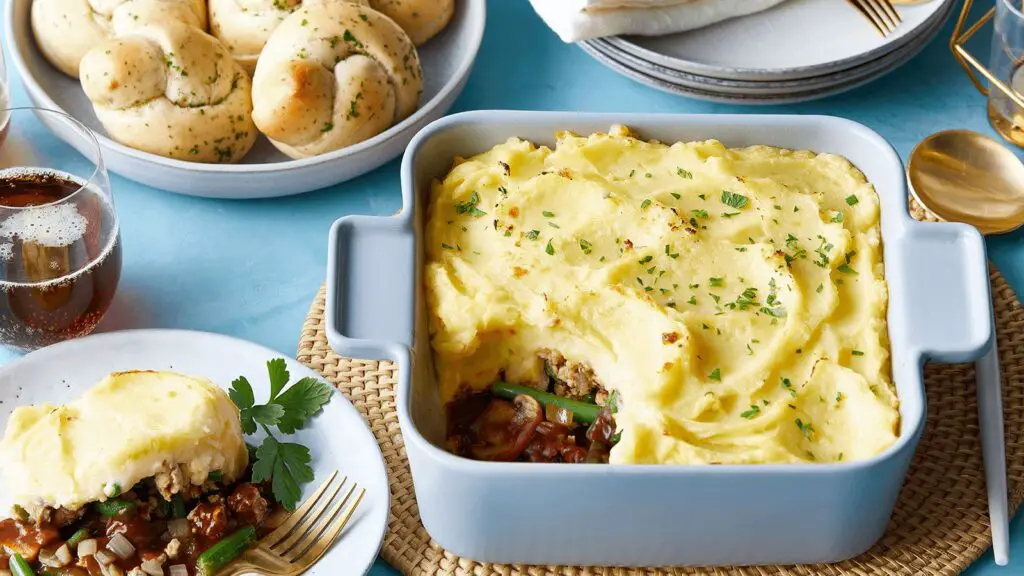
Japanese curry is a delicious and flavorful dish that is loved by many. It is made with a combination of spices, vegetables, and meat, resulting in a rich and hearty meal. If you have a batch of Japanese curry that you want to preserve for later use, freezing is a great option. Freezing Japanese curry allows you to enjoy this delectable dish even when it’s not readily available. By following a few simple steps, you can freeze Japanese curry while maintaining its taste and texture. This article presents a step-by-step guide on how to freeze Japanese curry properly for future enjoyment.
Here’s a guide on how to freeze Japanese curry:
Step 1: Prepare your Japanese curry
Before freezing Japanese curry, it’s essential to start with freshly cooked curry that has been properly cooled. This step is crucial to ensure food safety and maintain the quality of the curry during the freezing process.
Freshly cooked Japanese curry contains heat, steam, and moisture that can contribute to the formation of ice crystals when frozen. If you place hot or warm curry directly into the freezer, it can lead to the development of large ice crystals, which can affect the texture and taste of the dish once thawed.
To prevent this, allow the Japanese curry to cool completely to room temperature before proceeding. This cooling process helps dissipate the heat and moisture, reducing the risk of ice crystal formation.
When cooling the curry, it’s best to transfer it to a shallow container or a large mixing bowl. This allows for quicker cooling since the surface area is increased, promoting faster heat dissipation. Stirring the curry occasionally during the cooling process can also help distribute the heat evenly.
Step 2: Portion the curry
Dividing the Japanese curry into individual serving-sized portions is a practical step that offers convenience and flexibility when it comes to thawing and reheating later on. By portioning the curry before freezing, you can avoid the need to defrost and reheat the entire batch, allowing for easier meal planning and reduced food waste.
Freezing a large batch of Japanese curry as a whole can present challenges when you only need a portion for a single meal. If the curry is frozen as a solid block or in a large container, you would have to thaw the entire portion, even if you only require a small serving. This can be time-consuming and may result in reheating more curry than needed, leading to unnecessary leftovers.
By dividing the Japanese curry into individual serving-sized portions before freezing, you have the flexibility to take out only the amount you need. This allows for quicker and more efficient thawing, as smaller portions thaw faster than a large block. It also reduces the risk of overcooking or overheating the curry when reheating.
Additionally, portioning the curry provides convenience when it comes to meal planning. You can easily estimate the number of servings you require for future meals and freeze the curry accordingly. This way, you can have pre-portioned servings ready to go, saving time and effort when it comes to meal preparation.
It’s recommended to use freezer-safe containers or freezer bags for each individual portion. Make sure to label the containers with the date of freezing for easy tracking. This organization allows you to locate and thaw the desired portion without any confusion.
Step 3: Choose freezer-safe containers
When freezing Japanese curry, it’s important to select appropriate containers that are specifically designed for freezer storage. Using freezer-safe containers ensures the preservation of the curry’s quality, flavors, and textures over an extended period. Here’s why it’s crucial to choose the right containers:
- Airtight seal: Freezer-safe containers with airtight seals help prevent air from entering the container, reducing the risk of freezer burn. Freezer burn occurs when moisture evaporates from the food and comes into contact with the air, leading to dry, discolored patches and a loss of flavor. By choosing containers with a tight seal, you create a barrier that maintains the curry’s moisture content and prevents freezer burn.
- Material selection: Opt for containers made of glass or BPA-free plastic for freezing Japanese curry. Glass containers are non-porous and do not absorb odors or flavors from the curry. They are also resistant to temperature changes and can go directly from the freezer to the microwave or oven for reheating. BPA-free plastic containers are durable and lightweight, making them convenient for storage and transportation. Ensure that the plastic containers are labeled as freezer-safe to withstand low temperatures without warping or cracking.
- Temperature resistance: Freezer-safe containers are designed to withstand low temperatures without compromising their structural integrity. Regular food storage containers may not be able to withstand the extreme cold of the freezer, leading to cracks or breakage. Freezer-safe containers are specifically engineered to resist cold temperatures, ensuring that the curry remains safely stored without any risk of leakage or contamination.
- Stackable and space-efficient: Look for containers that are stackable, as this allows for efficient use of freezer space. Stackable containers help maximize storage capacity and make it easier to organize your freezer. They also ensure that the curry remains upright and intact during freezing, reducing the risk of spills or leaks.
Remember to select containers that are appropriately sized for the portioned curry. Leaving some headspace within the container allows for expansion during freezing without causing the container to burst. This extra space prevents any potential damage to the container and ensures the curry remains sealed properly.
Can I freeze Japanese curry in a plastic bag instead of a container?
While it is possible to freeze Japanese curry in a plastic bag, using airtight containers is generally recommended. Plastic bags may be more prone to leaking or tearing in the freezer, leading to potential contamination or loss of quality. Containers offer better protection against freezer burn and help preserve the curry’s flavors and textures.
Step 4: Fill the containers
Once you have chosen the appropriate freezer-safe containers for storing your Japanese curry, it’s time to transfer the curry into the containers. This step is crucial to ensure proper portioning, even distribution, and room for expansion during the freezing process. Here’s why it’s important to fill the containers correctly:
- Portion control: By carefully ladling the Japanese curry into the containers, you can ensure consistent portion sizes for each serving. This makes it easier to thaw and reheat the desired amount of curry without having to defrost the entire batch. Portion control also helps in meal planning and reduces food waste, as you only need to thaw what you intend to consume.
- Even distribution: When filling the containers, ensure that you distribute the curry evenly. This helps maintain a consistent flavor profile throughout each portion and ensures that all servings contain a balanced combination of ingredients. Stir the curry gently before ladling to incorporate any settled ingredients and achieve a uniform distribution.
- Headspace for expansion: Leaving some headspace in the containers is important to allow for expansion during freezing. Liquids, including the moisture content of the curry, expand when frozen. If the container is filled to the brim, the expanding curry may cause the container to crack or leak, compromising the quality and safety of the curry. Leaving a small gap at the top of each container accommodates this expansion and avoids any potential damage.
- Sealing effectiveness: Filling the containers without overflowing ensures a proper seal. If the curry spills over the edges of the container, it may interfere with the seal and lead to leaks or contamination. By keeping the curry within the container’s capacity and leaving some headspace, you can effectively seal the containers, preserving the curry’s freshness and preventing freezer burn.
To fill the containers, use a ladle or spoon to carefully transfer the curry, ensuring that each container receives an equal amount. Avoid overfilling and wipe away any spills or drips on the container rims to ensure a clean seal.
Step 5: Seal and label the containers
After filling the containers with the Japanese curry, it’s essential to seal them properly to maintain the curry’s quality and prevent freezer burn. Additionally, labeling the containers with the date of freezing provides important information for tracking and organizing your freezer. Let’s explore why sealing and labeling are important:
- Preventing air exposure: Securely sealing the containers is crucial to prevent air from entering. Air exposure can lead to freezer burn, which causes dehydration and deterioration of the curry’s texture, flavor, and overall quality. Freezer burn results in dry, discolored patches on the surface of the curry, compromising its taste and enjoyment. A proper seal minimizes air circulation within the container, preserving the curry’s moisture and flavors.
- Maintaining freshness: The sealed containers act as a protective barrier, preventing odors and flavors from other foods in the freezer from permeating the curry. This helps to maintain the distinct taste and aroma of the Japanese curry. The seal also prevents potential cross-contamination, ensuring that the curry remains uncontaminated and safe to consume.
- Labeling for organization: Labeling each container with the date of freezing allows for easy tracking and organization in your freezer. As time passes, it can be challenging to remember the exact freezing date of each container. By labeling them, you can keep track of how long the curry has been in the freezer, which is essential for maintaining food safety and quality. This information helps you prioritize consumption and ensures that the oldest curry is used first.
Labeling can be done using adhesive labels, masking tape, or permanent markers directly on the container. Include the freezing date on each label to make it clear and easy to read. It’s also helpful to include any specific details, such as the type of curry or additional ingredients used, for reference.
Properly sealed and labeled containers not only protect the quality of the Japanese curry but also contribute to a well-organized freezer. You can quickly identify and locate the curry when needed, making meal planning and preparation more efficient.
Step 6: Freeze the curry
Once you have sealed and labeled the containers of Japanese curry, it’s time to transfer them to the freezer for proper freezing. This step is crucial to maintain the quality, texture, and taste of the curry. Here’s why it’s important to freeze the curry correctly:
- Stability and prevention of spillage: Place the sealed containers of Japanese curry on a flat surface in the freezer. This ensures stability and prevents any potential spillage or leakage. Placing them on a flat surface also helps maintain the shape of the curry and prevents it from shifting during freezing. Avoid overcrowding the freezer and make sure there is enough space around each container to allow proper airflow for consistent freezing.
- Maintaining quality and preventing cross-contamination: By keeping the containers of Japanese curry away from other items in the freezer, you minimize the risk of flavor transfer and cross-contamination. Strong odors from other foods can potentially permeate the curry, altering its taste and aroma. Keeping the curry separate from other foods helps maintain its distinct flavors and ensures that it remains uncontaminated.
- Consistent freezing and preservation: Freezing the curry promptly and at the appropriate temperature is crucial for preserving its quality. Set your freezer to the recommended temperature for freezing, typically at or below 0°F (-18°C). This ensures that the curry freezes quickly, preventing the formation of large ice crystals that can affect the texture and taste. Consistent freezing helps preserve the flavors, colors, and overall quality of the curry, ensuring it remains delicious when thawed and reheated.
- Duration of freezing: Japanese curry can be safely stored in the freezer for several months, typically up to three to six months, while maintaining its quality. However, for the best taste and texture, it’s recommended to consume the frozen curry within three months. Properly labeling the containers with the freezing date helps you keep track of the curry’s duration in the freezer, making it easier to prioritize consumption and avoid unnecessary food waste.
Step 7: Thaw and reheat
When the time comes to enjoy your frozen Japanese curry, it’s important to thaw it properly and reheat it to ensure a delicious and safe meal. Follow these steps to thaw and reheat your frozen curry:
- Thawing overnight in the refrigerator: To thaw the frozen Japanese curry, remove the desired portion from the freezer and place it in the refrigerator overnight. Thawing the curry slowly in the refrigerator allows for gradual and even thawing, which helps maintain the quality and texture of the dish. Thawing overnight also reduces the risk of bacteria growth, as the curry remains within the safe temperature range.
- Reheating on the stovetop: Once the curry has thawed completely in the refrigerator, it’s time to reheat it. Transfer the thawed curry to a saucepan or a pot and place it over medium heat on the stovetop. Heating the curry slowly over medium heat ensures even distribution of heat and prevents scorching or overheating. Stir the curry occasionally to promote uniform heating and prevent it from sticking to the bottom of the pan.
- Reaching the desired serving temperature: Heat the curry in the saucepan until it reaches the desired serving temperature. This temperature may vary depending on personal preference but generally ranges from 165°F to 185°F (74°C to 85°C). Heating the curry to this temperature ensures that it is thoroughly heated, reducing the risk of foodborne illnesses. Use a food thermometer to check the internal temperature and ensure it has reached the safe range.
- Stirring and monitoring: While reheating the curry, continue to stir occasionally to prevent any sticking or burning. This helps distribute the heat evenly throughout the curry and ensures that it reheats consistently. Keep a close eye on the curry to prevent it from boiling or overcooking, as this can affect the texture and flavors.
- Optional additions and adjustments: If desired, you can make any necessary adjustments or additions to the curry while reheating. This may include adding a splash of water or broth to adjust the consistency or adjusting the seasoning to suit your taste preferences. Stir well after making any additions to incorporate them into the curry evenly.
Other related questions
Can I refreeze Japanese curry?
It is generally not recommended to refreeze Japanese curry once it has been thawed. Refreezing can lead to a loss of quality, as the texture and flavors may be affected. Additionally, repeated freezing and thawing can increase the risk of bacterial growth and foodborne illnesses. It is best to thaw and consume the curry in portions to avoid the need for refreezing.
How do I know if the Japanese curry has gone bad after being frozen?
To determine if Japanese curry has gone bad after being frozen, there are several indicators to observe. Look for signs of freezer burn, such as dry and discolored patches on the surface of the curry. Additionally, check for any unusual odors, off flavors, or changes in texture, as these can indicate spoilage. When in doubt, it is best to err on the side of caution and discard the curry if there are any doubts about its safety or quality.
Can I freeze Japanese curry that contains coconut milk?
Yes, you can freeze Japanese curry that contains coconut milk. However, it’s important to be aware that coconut milk can sometimes undergo a slight separation or change in texture when frozen. To minimize this, thoroughly stir the curry before freezing and gently stir it again after thawing to help redistribute any separated coconut milk.
Can I freeze Japanese curry roux blocks or pre-packaged curry?
Yes, you can freeze Japanese curry roux blocks or pre-packaged curry. These store-bought items are typically freezer-friendly and can be stored for an extended period. However, it’s always recommended to check the packaging instructions for any specific guidelines or recommendations provided by the manufacturer.
Can I freeze Japanese curry made with a homemade roux?
Yes, you can freeze Japanese curry made with a homemade roux. Once the curry is cooked and properly cooled, you can freeze it following the recommended freezing guidelines. Freezing homemade curry allows you to enjoy the flavors and efforts put into making the roux from scratch at a later time.
Can I freeze Japanese curry with rice?
It is generally not recommended to freeze Japanese curry with rice. Rice tends to lose its texture and become mushy upon freezing and thawing. It is best to freeze the curry separately and cook fresh rice when you’re ready to serve the dish.
Can I freeze Japanese curry that contains seafood?
Yes, you can freeze Japanese curry that contains seafood. However, keep in mind that the texture of seafood, such as shrimp or fish, may change slightly upon freezing. It is advisable to slightly undercook the seafood before adding it to the curry, as it will continue to cook slightly during the reheating process.








